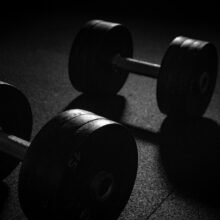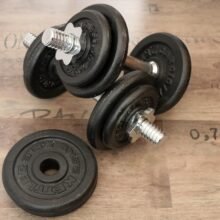Effective Home Weight Loss Exercises: Your Ultimate Guide to Getting in Shape
Introduction to Home Weight Loss Exercises
Embarking on a journey to shed pounds can often seem daunting, particularly when faced with common challenges such as time constraints, gym memberships, and finding the motivation to maintain a regular exercise routine. However, home weight loss exercises offer a convenient and effective alternative for individuals looking to improve their fitness without stepping out of their homes. These exercises are designed to fit seamlessly into busy schedules, making it easier for people to incorporate physical activity into their daily lives.
The appeal of home weight loss exercises lies in their flexibility and accessibility. Without the need for a gym membership or specialized equipment, anyone can begin their fitness journey within the comfort of their own home. This eliminates barriers such as commute times, costs, and the intimidation often felt in crowded gym environments. Moreover, exercising at home provides the freedom to tailor workouts to individual preferences and fitness levels, ensuring a personalized approach to weight loss.
For many individuals, the key to successfully losing weight is finding a balance between exercise and other commitments. Home-based workouts offer the perfect solution by allowing for shorter, more frequent sessions that can easily be squeezed into a hectic day. Additionally, the variety of exercises suitable for home settings helps keep routines engaging and diverse, which is essential for maintaining motivation over time.

The aim of this blog post is to equip readers with practical and effective exercises that can be performed at home to achieve weight loss goals. By providing a comprehensive guide to a range of exercises, our goal is to empower individuals to take control of their fitness journey in a way that is both manageable and sustainable. Whether you’re a beginner or looking to enhance your existing routine, the following sections will offer valuable insights and easy-to-follow exercises to help you get in shape without ever having to leave your home.
The Science Behind Weight Loss
Understanding the science behind weight loss is crucial for anyone striving to lose weight efficiently and sustainably through home weight loss exercises. At the core of weight loss lies the concept of a calorie deficit. This occurs when the number of calories you burn exceeds the number of calories you consume. Creating a calorie deficit forces the body to utilize stored fat for energy, thereby leading to weight loss.
Metabolism plays a significant role in how quickly or slowly you burn calories. It encompasses all the biochemical processes within your body, from digesting food to managing hormonal balance. The higher your metabolic rate, the more calories you burn at rest. Exercise, particularly home weight loss exercises, can boost your metabolism, making it easier to maintain a calorie deficit.
Combining cardiovascular exercise and strength training is essential for optimal weight loss. Cardio exercises, like running, cycling, or even dancing, are effective at burning a significant number of calories in a relatively short time. They improve cardiovascular health and enhance overall stamina, making daily activities easier. On the other hand, strength training exercises such as weightlifting, resistance band exercises, or bodyweight workouts build muscle mass. Increased muscle mass leads to a higher resting metabolic rate, which means you will burn more calories even when you are not actively exercising.
Muscle mass is particularly crucial in influencing metabolism. With more muscle, your body requires more energy to maintain it, thereby expending more calories. This underscores the importance of incorporating strength training into your exercise regimen. Furthermore, the principle of progressive overload, which involves gradually increasing the intensity of your workouts, ensures that your muscles continue to grow and adapt.
Consistency in your exercise routine is another key factor. Regularly engaging in home weight loss exercises fosters discipline and helps establish a habit that is sustainable in the long run. The combination of cardio and strength training, along with a balanced diet, forms a comprehensive approach to effective weight loss.
Setting Realistic Goals and Tracking Progress
Establishing realistic and attainable goals is a critical aspect of any successful home weight loss exercise program. The adoption of SMART goals is fundamental to this process. SMART stands for Specific, Measurable, Achievable, Relevant, and Time-bound, and these criteria help shape meaningful objectives that keep you focused and motivated throughout your weight loss journey.
A specific goal will clearly define what you want to achieve, such as losing a certain amount of weight or improving endurance through home workouts. Measurable implies that your goals can be quantified or tracked, enabling you to gauge your progress effectively. For example, shedding 5 pounds over a month provides a clear target. Achievable goals consider your current fitness level and the practicality of your weight loss targets, ensuring they are not overly ambitious. Relevant goals are those that align with your needs and aspirations, rather than societal pressures or unrealistic standards. Finally, Time-bound goals set a specific deadline, fostering a sense of urgency and focus, like aiming to lose weight within three months.
To maintain motivation and keep track of progress, leveraging various tools and methods is highly beneficial. Fitness apps are one such resource, offering features like exercise tracking, meal logging, and progress charts. Some popular options include MyFitnessPal, Fitbit, and Lose It, which can provide insights into your home weight loss exercise regimen. Meanwhile, maintaining a fitness journal allows for a tangible record of your daily or weekly accomplishments and reflections on your journey, facilitating pattern recognition and incremental adjustments.
Wearable technology also plays a pivotal role in monitoring fitness activities and overall progress. Devices like smartwatches or fitness bands can track steps, calorie burn, heart rate, and sleep patterns, offering a comprehensive view of your physical health. These tools can integrate with fitness apps to provide a holistic approach to weight loss management, ensuring that you remain informed and prepared to make data-driven decisions.
Cardio Exercises for Home Weight Loss
Engaging in cardio exercises can be an effective way to achieve weight loss at home. The best part about these activities is that they require minimal to no equipment, making them easily accessible. Here, we’ll explore different types of home weight loss exercises focusing on cardio, which can boost your metabolism, burn calories, and improve overall cardiovascular health.
Jumping Jacks: Start by standing with your feet together and arms at your sides. Jump your feet out while simultaneously raising your arms above your head, then jump back to the starting position. This exercise elevates your heart rate and involves multiple muscle groups, making it an excellent calorie burner.
High Knees: Stand in place and start running by bringing your knees up to hip level with each step. Keep your core tight and pump your arms to maintain balance. High knees are great for increasing heart rate and enhancing lower body strength.
Burpees: Begin in a standing position, drop into a squat with your hands on the ground, kick your feet back to a plank position, and then revert to the squat before jumping up into a standing position. Burpees are high-intensity exercises that condition the entire body, making them highly effective for weight loss.
Running in Place: Simple yet efficient, running in place requires lifting your knees and pumping your arms as if you were running. This can be done anywhere and is an excellent way to get your heart rate up, mimicking the benefits of outdoor running while indoors.
Dancing: Turn on your favorite music and dance around your room. Dancing is not just fun but also a fantastic way to burn calories and improve coordination. From Zumba to freestyle, any dance form can be transformed into an energetic cardio session.
For a structured cardio workout, aim for 20-30 minutes of continuous activity. Incorporate intervals by alternating between high-intensity exercises, like burpees, and lower-intensity moves, like dancing, to keep the heart rate elevated and maximize calorie burn. For optimal results, integrate these home weight loss exercises into your regular fitness routine.
Strength Training Exercises for Weight Loss
Strength training is a cornerstone of any effective home weight loss exercise program. It not only helps in building muscle but also plays a crucial role in boosting metabolism, which is essential for burning calories efficiently. Below, we dive into some key bodyweight exercises that are excellent for promoting weight loss while strengthening your body.
A fundamental exercise to start with is the push-up. Push-ups primarily target the chest, shoulders, and triceps, while also engaging the core. To perform a standard push-up, place your hands shoulder-width apart, keep your body in a straight line from head to heels, and lower yourself until your chest nearly touches the floor. For added difficulty, try variations such as the narrow-grip push-up or the decline push-up, which increase the challenge and muscle engagement.
Another pivotal exercise is the squat. Squats are incredibly effective for the lower body, targeting the quadriceps, hamstrings, and glutes. Begin with your feet shoulder-width apart and lower your body by bending your knees and hips as if you’re sitting back into a chair. Ensure that your knees don’t extend beyond your toes, and your back remains straight throughout the movement. To amplify the workout, you can integrate jump squats or single-leg squats into your routine.
Lunges are also instrumental in any home weight loss exercise regimen. They work multiple muscles in the lower body, including the quads, hamstrings, and glutes. Perform lunges by stepping forward with one leg and lowering your body until your front knee is bent at about a 90-degree angle. Alternate legs to maintain balance and ensure even muscle development. Variations such as reverse lunges and walking lunges add variety and intensity to your workouts.
Planks are another excellent exercise, particularly for core stability. To execute a plank, position your body as if you’re about to do a push-up but rest on your forearms instead of your hands. Keep your body straight and hold this position for as long as possible. Side planks and plank-to-push-up variations can further challenge your core and upper body strength.
Finally, tricep dips are effective for targeting the muscles in the back of your upper arms. Use a stable chair or bench; place your hands behind you on the edge, with fingers pointing forward. Lower your body by bending the elbows and then push back up. To increase intensity, try extending your legs further away from your body.
Incorporating these strength training exercises into your home weight loss exercise plan is pivotal for muscle growth and metabolic efficiency. Combining a variety of movements ensures a well-rounded routine that not only aids in weight loss but also enhances overall strength and endurance.
Combining Cardio and Strength Workouts
Integrating cardio and strength training into your routine is a powerful strategy for maximizing weight loss results. By combining these two types of exercises, you can effectively burn calories, boost metabolism, and build lean muscle, all of which contribute to lasting weight loss. One approach to achieving this balance is through a comprehensive workout schedule. For instance, you could alternate between cardio and strength training days, or even integrate them into the same session.
A sample weekly workout schedule might look like this:
- Monday: 30 minutes of brisk walking or running followed by 20 minutes of strength training (e.g., bodyweight exercises like squats, lunges, and push-ups).
- Tuesday: Rest or light stretching and yoga.
- Wednesday: 20 minutes of HIIT (High-Intensity Interval Training) alternating between 30 seconds of sprinting and 30 seconds of walking, followed by a 15-minute strength workout focusing on core exercises.
- Thursday: Moderate-intensity cardio activity, like cycling or swimming for 45 minutes.
- Friday: 20 minutes of circuit training combining cardio bursts (like jumping jacks or burpees) and strength moves (such as planks or dumbbell rows).
- Saturday: Active recovery with low-impact exercises such as walking or gentle yoga.
- Sunday: Full-body strength workout for 30 minutes focusing on multi-joint exercises like deadlifts, bench presses, and pull-ups, and concluding with a 15-minute cardio cool-down.
Maintaining variety is crucial to prevent workout plateaus and keep your exercise regimen engaging. Switching up your routines not only challenges different muscle groups but also keeps your mind focused and motivated. Incorporate varied exercises and different forms of cardio, from running and cycling to jumping rope and dancing.
The benefits of high-intensity interval training (HIIT) and circuit training are noteworthy for those aiming for home weight loss exercises. HIIT involves short, intense bursts of activity followed by brief rest periods. This method keeps your heart rate elevated, improves cardiovascular health, and leads to significant calorie burn both during and after workouts due to the afterburn effect. Circuit training, on the other hand, combines strength exercises with cardio intervals in a seamless rotation, ensuring an efficient, full-body workout that targets multiple fitness aspects simultaneously.
By thoughtfully combining cardio and strength workouts, you create a dynamic routine that accelerates weight loss, builds muscle, and enhances overall fitness. Implementing these strategies at home can yield impressive outcomes without the need for gym equipment or memberships.
Creating a Sustainable Home Workout Routine
Establishing a sustainable home workout routine is crucial for achieving and maintaining weight loss goals. Consistency forms the bedrock of any effective fitness plan, and this remains true for home-based exercises. Incorporating regular activities that are both manageable and enjoyable increases adherence, reducing the likelihood of burnout or injuries. A well-rounded approach is beneficial, integrating cardio, strength training, and flexibility exercises to ensure a balanced regimen.
When designing your routine, include rest days to allow your body to recover and rebuild. Overworking can lead to fatigue and potential injuries, which can derail your progress. Listening to your body is key; pay attention to signs of exhaustion or discomfort and adjust your routine accordingly. For instance, if you feel overly fatigued, consider substituting a high-intensity workout with a lighter session focusing on stretching or yoga.
Addressing common obstacles is also essential for maintaining a sustainable workout routine. Time constraints are a frequent issue for many individuals. To overcome this, allocate specific time slots for your exercises, treating them with the same importance as other important activities. Additionally, short but effective home weight loss exercises can fit into tight schedules, ensuring you remain consistent even on busy days.
Motivation plays a critical role in sustaining a regular workout routine. Setting small, achievable goals can provide a sense of accomplishment and keep your motivation levels high. Tracking progress also contributes to ongoing commitment. Whether it’s through a fitness journal or an app, recording your milestones helps maintain focus and provides tangible evidence of your improvements.
Limited space is another challenge often faced when exercising at home. However, many effective exercises, such as bodyweight routines, require minimal space. Push-ups, squats, lunges, and planks are excellent examples of home weight loss exercises that can be done in confined areas while still delivering notable benefits. Utilizing multi-functional fitness equipment, such as resistance bands or adjustable dumbbells, can also maximize your workout potential without occupying excessive space.
Ultimately, the key to a successful home workout routine lies in blending structure with flexibility. Adapt your plan as your fitness level progresses and life’s demands evolve, ensuring that you stay on track toward your long-term health and weight loss goals.
Conclusion and Encouragement
In the quest for fitness, home weight loss exercises offer a flexible and accessible pathway towards achieving your health goals. Throughout this guide, we’ve explored various effective exercises that can be performed within the comfort of your home. These exercises, ranging from cardiovascular routines to strength training, are designed to cater to different fitness levels. They require minimal equipment and space, making them an ideal option for those looking to maintain or improve their fitness without the need for a gym membership.
The significance of incorporating home weight loss exercises into your routine cannot be overstated. Regular physical activity not only supports weight loss but also promotes overall well-being by enhancing cardiovascular health, improving muscle strength, and boosting mental health. As discussed, consistency is key. Establishing a dedicated exercise schedule and gradually increasing the intensity can lead to measurable progress over time.
It’s important to remember that the journey to fitness is a marathon, not a sprint. Quick fixes and overnight success stories are rare. True, sustainable progress is achieved through persistence, discipline, and a positive mindset. Celebrate small victories along the way and don’t be discouraged by setbacks. Every step taken in the right direction, no matter how small, brings you closer to your goals.
We encourage you to begin your home exercise journey today. Set clear, achievable objectives and tailor a regimen that fits your lifestyle. Consistency and patience are crucial, so stay motivated and dedicated to your health and wellness. Your commitment will not only transform your body but also enhance your overall quality of life.
In closing, take the first step towards a healthier you. Embrace the journey, stay committed, and recognize that each effort you make is an investment in your well-being. Start your home weight loss exercise routine today and enjoy the benefits of a fitter, healthier lifestyle.


